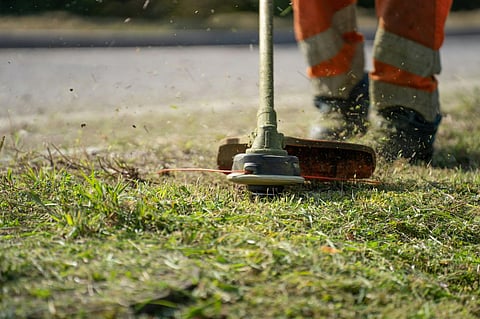The Pros and Cons of Different Types of Brush Cutter Heads
Taking care of a garden or outdoor area typically calls for tools to get the job done right; brush cutters are indispensable when dealing with thick vegetation growth. Considering the diverse types of brush cutter heads available that cater to requirements is key to grasping their strengths and weaknesses. This blog delves into the positives and negatives of varying brush cutter heads to assist individuals in making thought-out choices.
Blade Heads
Blade attachments are known for easily cutting through vegetation due to their metal construction. This allows them to slice through branches and tough undergrowth effortlessly, making them perfect for heavy-duty work in areas with thick foliage.
While blade brush cutter heads are indeed efficient, they do have some drawbacks. The sharpness of the blades raises the risk of accidents, so users must be extra cautious when handling them. Moreover, regular sharpening may be necessary to uphold their performance, resulting in added maintenance duties.
Nylon String Heads
Polyester string heads are commonly chosen for their flexibility and convenience in operation tasks like trimming grass and small weeds to maintain one's yard. Their lightweight nature allows for effortless handling and minimises fatigue while in use.
Nylon strings face challenges when managing foliage as they tend to wear out rapidly and require frequent replacement. Additionally, using nylon heads on solid surfaces may lead to wear and impact their longevity.
Plastic Blades
Plastic blades provide a mix of cutting strength similar to metal blades and the versatility of nylon strings. They are efficient at handling tasks like slicing through grass and light foliage. Their lightweight design also helps lessen the strain on users, making them a popular option for usage.
While plastic blades are adaptable for use, they do have some durability issues to consider. They can break or chip when they come into contact with objects, resulting in increased replacement expenses. Moreover, their performance may not be as effective on denser vegetation compared to metal blades, which restricts their suitability for several tasks.
Brush Knife Heads
Blade attachments for knives blend the cutting power of blades with a design that reduces hazards. They often come with cutting edges to handle plant growth effectively. Their capacity to slice through brush makes them ideal for jobs.
While brush knife heads are tools for gardening tasks, they tend to be heavier compared to options, which can cause discomfort during extended periods of use. The added weight leads to tiredness, especially for individuals not used to handling heavy equipment regularly. Furthermore, brush knife heads require additional upkeep for them to function at their best.
Chisel-Tooth Blades
Chisel-edged blades offer perfect cutting strength for professional applications. They are particularly effective at handling vegetation and thick foliage while delivering a clean cut with minimal exertions. Their durable construction guarantees durability, making them a dependable option for tedious jobs.
One major drawback of chisel tooth blades is their intricacy in design, which demands a high level of sharpening expertise that can be challenging for individuals not well acquainted with blade care practices. Additionally, their efficiency diminishes when applied to plant life, thus restricting their adaptability.
Choosing the Right Brush Cutter Head
Choosing the right brush cutter head involves considering factors such as the kind of plants you're tackling, the landscape you're working on, and how often you'll be using it. It's important to consider what works for you by comparing the advantages and disadvantages of each choice available.
Nylon string heads can handle light tasks. At the same time, tougher jobs may require blade or brush knife heads with plastic blades that strike a balance between cutting efficiency and user-friendliness. Landscapers who opt for chisel-tooth blades for their exceptional cutting performance prefer these.
Safety Precautions
No matter which cutting tool you use, safety should always come first. Wearing safety gear, such as goggles, gloves, and strong shoes, can prevent mishaps. Getting to know the equipment and following the manufacturer's instructions guarantees effective usage.
Sharpening blades and replacing parts can prolong tools' lives and significantly improve their performance. Keeping equipment in optimal working order helps minimise the likelihood of accidents and boosts operational effectiveness.
Conclusion
Knowing the advantages and disadvantages of brush cutter heads helps people make informed decisions when choosing one for their landscaping projects. Each type has its set of advantages and drawbacks that cater to landscaping requirements. By considering needs and safety first, people can attain the outcomes in their gardening pursuits.
Inspired by what you read?
Get more stories like this—plus exclusive guides and resident recommendations—delivered to your inbox. Subscribe to our exclusive newsletter
Resident may include affiliate links or sponsored content in our features. These partnerships support our publication and allow us to continue sharing stories and recommendations with our readers.

